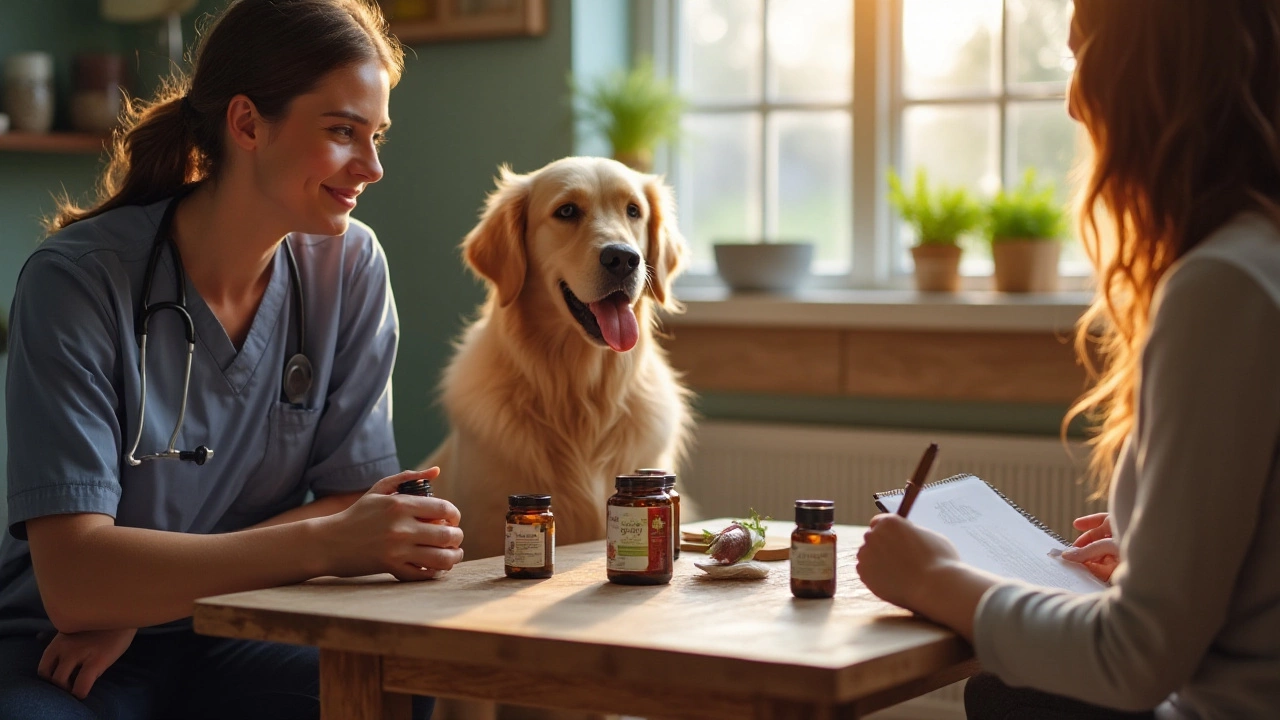When to Give: Timing Tips for Dog Food, Treats & Supplements
Ever wonder if you’re feeding your dog at the right time? It’s not just about what you give, but when you give it. The right timing can boost digestion, keep energy steady, and make training easier. Below are simple, practical steps you can start using today.
Food & Meal Timing
Most adult dogs do fine on two meals a day, spaced about 8‑10 hours apart. Morning and evening work well because the stomach is empty after a night’s rest and before bedtime. For puppies, three to four smaller meals spread evenly across the day prevent blood‑sugar crashes and support rapid growth. A good rule of thumb is to feed at the same times each day – dogs love routine.
Watch your dog’s activity level. If your pup has a high‑energy walk in the morning, feed a light breakfast first, then give a bigger lunch after the walk. This prevents a heavy stomach during vigorous exercise, which can cause cramping.
When switching foods – say from puppy kibble to adult – do it gradually over 7‑10 days. Start with 75% old food, 25% new, and shift the ratio each couple of days. This timing lets the digestive system adapt without upsetting the tummy.
Supplements & Treats Timing
Supplements work best when paired with a meal. Omega‑3 oils, joint glucosamine, and multivitamins need dietary fat to absorb properly. Toss the supplement into the morning or evening bowl, not on an empty stomach.
Treats are a great training tool, but timing matters. Use them right after a command or desired behavior, not as a blanket snack throughout the day. Too many treats can fill the stomach and lead to weight gain, so keep them under 10% of daily calories.
If you’re giving probiotics or digestive enzymes, follow the product’s label – most recommend giving them 30 minutes before a meal. This ensures the good bacteria reach the gut when the stomach is most receptive.
For special foods like pumpkin for digestive soothing, a tablespoon mixed into dinner works well. It’s gentle on the tummy and won’t interfere with nutrient absorption.
Overall, keep a simple schedule: breakfast, midday snack or supplement, dinner, and a brief training session with a treat. Write it down or set reminders on your phone; consistency beats instinct every time.
By aligning what you give with when you give it, you’ll see steadier energy, fewer stomach upsets, and a happier dog ready to learn. Try these timing tips for a week and notice the difference – your pet will thank you with wagging tails and bright eyes.
Best Time to Give Dog Supplements for Optimal Health
Choosing the right time to introduce supplements into your dog's diet can significantly impact their overall health and well-being. This article explores the signs that your dog might need supplements, the benefits they offer, and how to navigate the supplementation process safely. Essential advice will be provided on assessing your dog's specific needs and ensuring a balanced diet. Gain insight into what types of supplements are available and how they support different health aspects. Understand when to consult a vet to make informed decisions for your canine companion.
